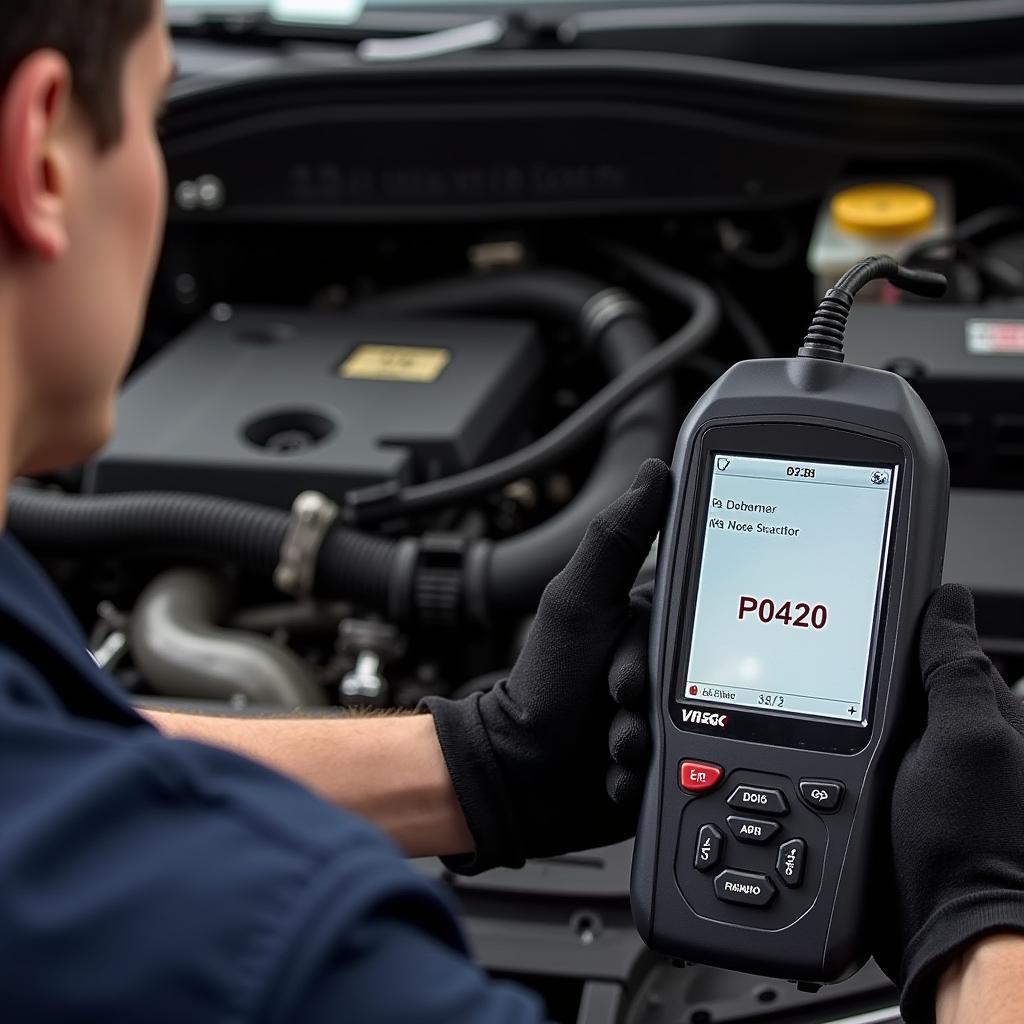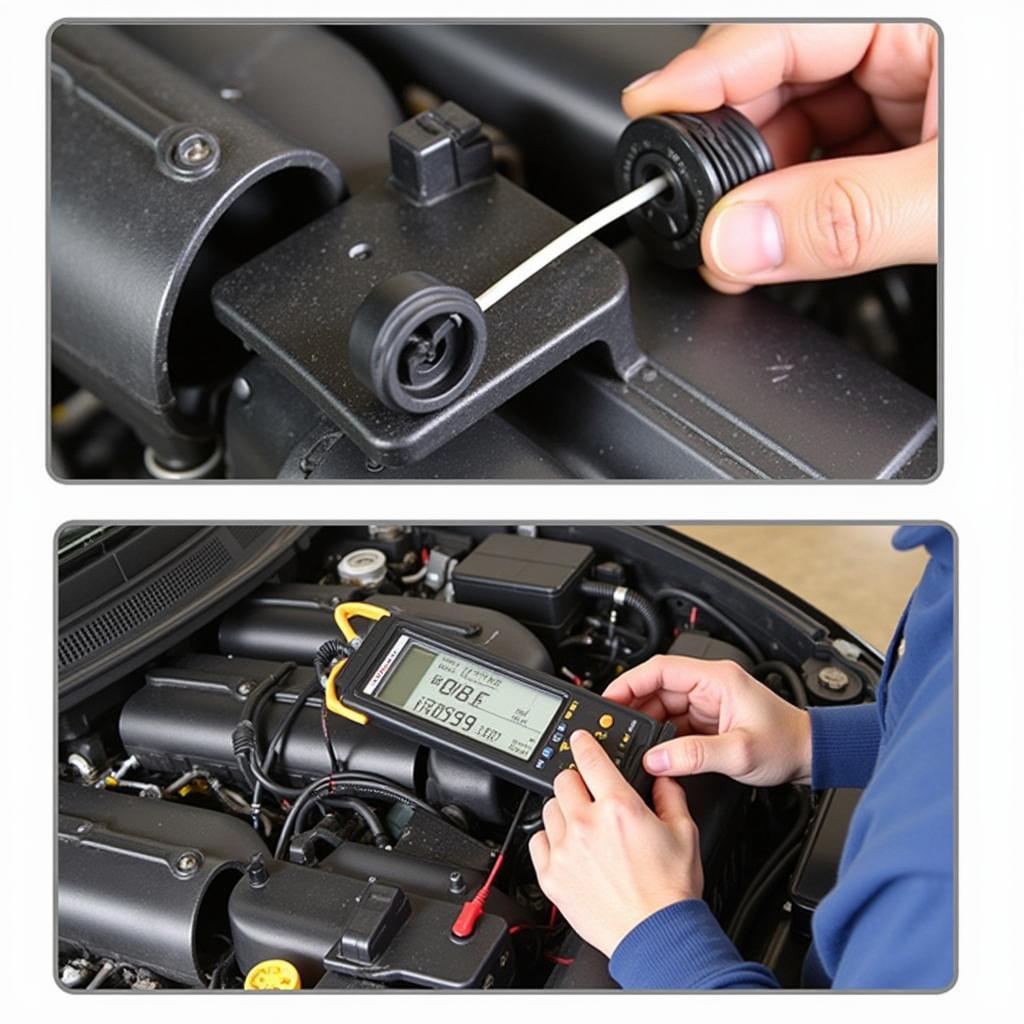Are you experiencing performance issues with your trusty 1999 Chevy Suburban? Perhaps it’s idling rough, lacking power, or guzzling gas like it’s going out of style. While several culprits could be behind these automotive ailments, the ignition timing is a frequently overlooked suspect. Fortunately, diagnosing this is often within reach for the DIY mechanic, especially with a scan tool. This article will guide you through how to check the ignition timing on a 99 Chevy Suburban using a scan tool and interpret the results.
Why Ignition Timing Matters
Before we dive into the diagnostics, it’s helpful to understand why ignition timing is crucial. In simple terms, ignition timing refers to the precise moment the spark plug ignites the air-fuel mixture in your engine’s cylinders. This combustion needs to happen at the optimal time to ensure efficient power delivery and minimize harmful emissions.
If your ignition timing is off, even slightly, it can lead to a cascade of problems, including:
- Rough Idling: The engine may shake and vibrate noticeably, especially when the vehicle is stationary.
- Poor Fuel Economy: Your Suburban might start drinking fuel like a thirsty camel due to incomplete combustion.
- Reduced Power and Acceleration: You might notice a sluggish response when you step on the gas pedal.
- Engine Knock or Ping: This is a distinct metallic rattling or pinging sound, signaling uncontrolled combustion in your engine.
- Increased Emissions: Improper ignition timing can lead to higher emissions, impacting the environment and potentially causing your Suburban to fail emissions tests.
Using a Scan Tool to Check Ignition Timing
Now that you understand the importance of correct ignition timing, let’s grab your scan tool and see how to check it on your 1999 Chevy Suburban.
Step 1: Locate the Diagnostic Port
The first step is finding your Suburban’s OBD-II (On-Board Diagnostics) diagnostic port. In most 1999 models, you’ll find this port under the dashboard on the driver’s side, often near the steering column or fuse box.
Step 2: Connect the Scan Tool
With the ignition off, plug your scan tool into the OBD-II port. Make sure the connection is secure.
Step 3: Turn on the Ignition
Turn the ignition key to the “On” position, but don’t start the engine. This will power up the scan tool and allow it to communicate with your Suburban’s computer.
Step 4: Access Live Data
Navigate through your scan tool’s menu to find the “Live Data” or “Data Stream” option. This section will display real-time information from your engine’s sensors, including the ignition timing.
Step 5: Locate Ignition Timing
Look for a parameter labeled “Ignition Advance” or “Spark Advance.” The value displayed represents the number of degrees before top dead center (BTDC) that the spark plug fires.
Step 6: Interpret the Reading
The ideal ignition timing for your 1999 Chevy Suburban will vary slightly depending on engine load, RPM, and other factors. However, you can generally expect to see a reading between 10-20 degrees BTDC at idle.
-
Low Reading: If the ignition timing is significantly lower than this range, it can indicate a problem with the ignition system, such as a faulty distributor, ignition coil, or crankshaft position sensor.
-
High Reading: Conversely, if the timing is too far advanced, it can lead to engine knock and other issues. This might point to a problem with the knock sensor, vacuum advance system, or a mechanical issue within the distributor.
Expert Insight:
“Always consult your vehicle’s repair manual for the precise ignition timing specifications,” advises veteran mechanic John Miller. “Attempting to adjust the timing without the correct information can potentially damage your engine.”
What if You Can’t Find Ignition Timing on the Scan Tool?
While most modern scan tools can read ignition timing, some basic models may not have this functionality. In this case, you’ll need to resort to the traditional method of checking and adjusting ignition timing: using a timing light.
When to Seek Professional Help
If you’ve checked the ignition timing and the readings are significantly out of spec, or if adjusting the timing doesn’t resolve your engine performance issues, it’s best to seek professional help. A qualified mechanic can diagnose the problem accurately and recommend the necessary repairs.
Conclusion
Checking the ignition timing on your 1999 Chevy Suburban with a scan tool is a relatively straightforward process that can help you identify potential engine problems. Remember to consult your vehicle’s repair manual for specific instructions and always prioritize safety when working on your vehicle.
If you need further assistance with your 1999 Chevy Suburban or have questions about scan tools, feel free to contact the experts at ScanToolUS. We’re here to help you keep your vehicle running smoothly.
Contact us:
Phone: +1 (641) 206-8880
Office: 1615 S Laramie Ave, Cicero, IL 60804, USA
FAQs
1. Can I adjust the ignition timing myself?
While it’s technically possible to adjust ignition timing yourself using a timing light, it’s not recommended unless you have experience with automotive repairs. Incorrect adjustments can potentially damage your engine.
2. How often should I check my ignition timing?
It’s a good idea to check your ignition timing whenever you experience performance issues like rough idling, poor fuel economy, or engine knock.
3. What other factors can affect ignition timing?
Besides a faulty ignition system, factors like engine temperature, altitude, and even the quality of fuel can influence ignition timing.
4. Can a bad knock sensor affect ignition timing?
Yes, a malfunctioning knock sensor can prevent the engine control unit (ECU) from properly retarding the ignition timing when it detects engine knock. This can lead to damage over time.
5. My scan tool shows the ignition timing is fluctuating. What does this mean?
Fluctuating ignition timing readings can indicate a problem with the crankshaft position sensor, camshaft position sensor, or other components involved in timing control. It’s best to have a mechanic investigate the issue further.


